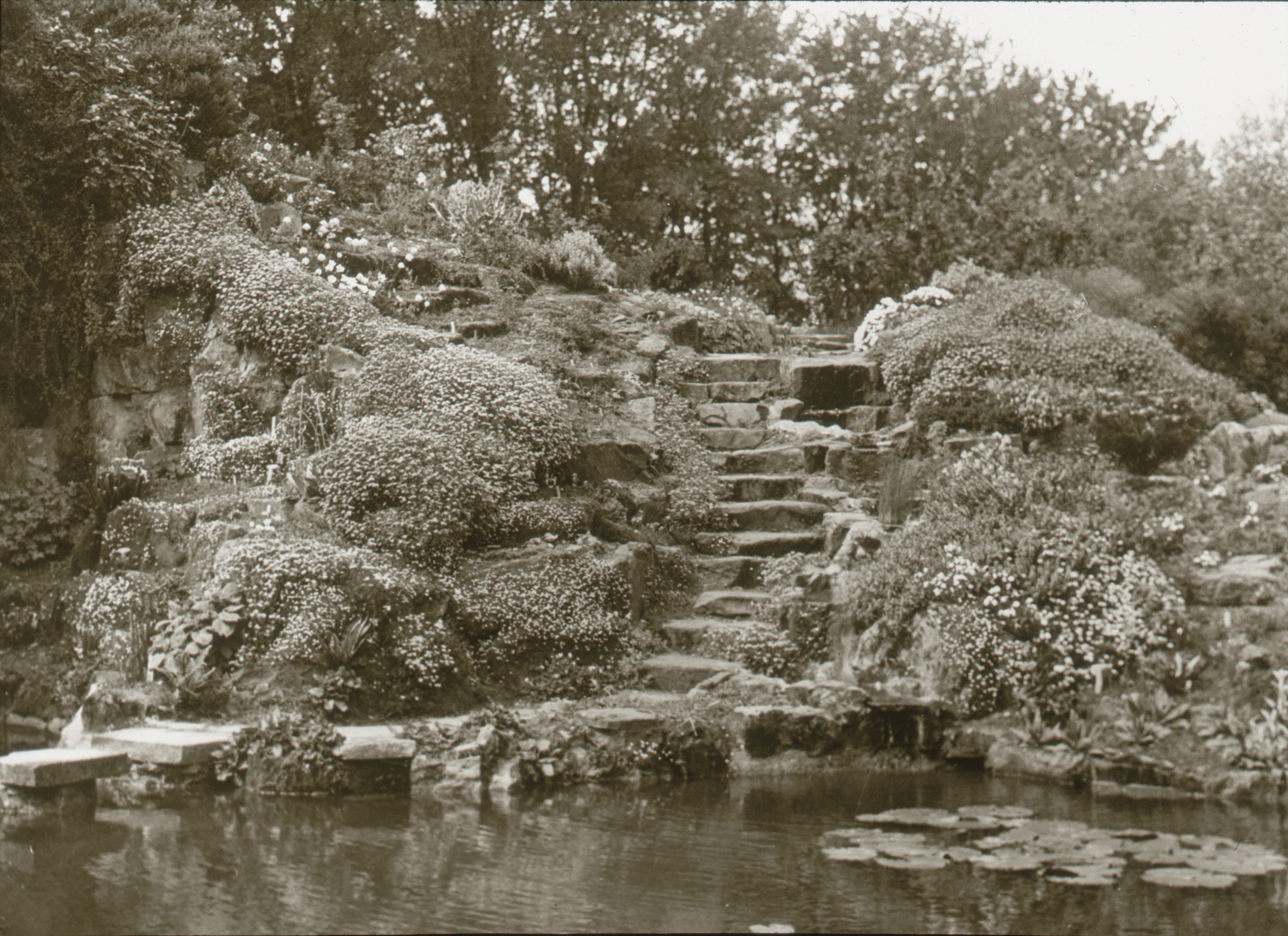More Balls, Please
The origins of Highdown Gardens started with a tennis court. In 1909, when Frederick Stern arrived at Highdown Towers, it had no garden. The ramshackle Regency property just had two lawns and a disused chalk pit were pigs and chickens were kept. One corner of the pit was used as the rubbish tip. Following the latest aristocratic fashion, Stern created a grass tennis court on the only flat ground available, next to the chalk pit. However, this caused more problems as there was glare from the chalk and the tennis balls frequently landed in the pig styes!
Nothing at Highdown
Stern asked expert nurseryman Anthony Waterer what plants could grow in the chalk pit to stop the glare and camouflage the pig styes. “Nothing” replied Waterer. Unperturbed, Stern asked his friends botanist Arthur Hill, arborist Robert Woodward and gardener Charles Musgrave. They suggested a bigger project: creating a new garden as an experiment. It was good timing as this was a period of a new radical garden style.
Rock Revolution
Victorian country houses were usually dominated by huge lawns and geometric patterns of psychedelic flower beds. From 1883 ‘The English Flower Garden’ by William Robinson caused a sensation by suggesting using natural methods, hardy plants and rock gardens. He inspired Reginald Farrer a young garden designer and plant hunter. Farrer’s successful book ‘My Rock Garden’, first published in 1907, continued a craze transforming lawns into limestone Alpine rock gardens.
Farrer’s Seeds
Stern approached Farrer’s friend, the botanist Clarence Elliot, to assist with building the first Highdown rockery in 1910. This is when Stern’s horticultural obsession grew. Such was Sterns’ admiration for Farrer that he co-sponsored him on his first plant hunting expedition to China in 1914. Stern later grew seeds collected by Farrer, some you can still see today that thrive in the Highdown chalk.
Sources: ‘A Chalk Garden’ by F. C. Stern, 1960; ‘The Shell Guide to Gardens’ by Arthur Hellyer, 1977; Archives of Royal Botanic Gardens, Kew.
